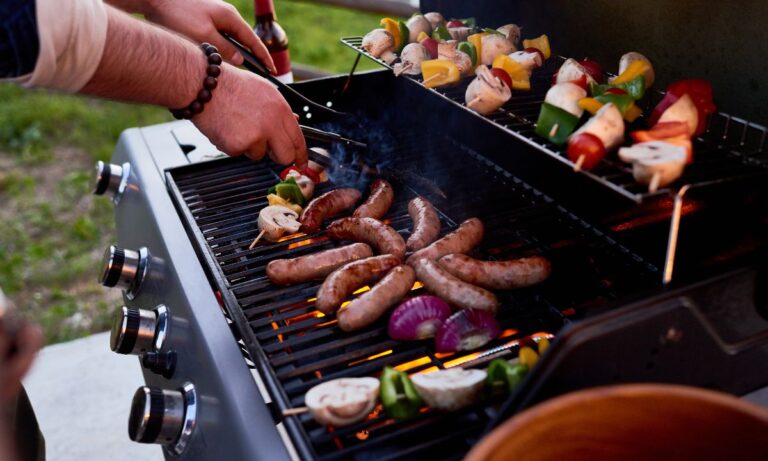Mastering Basic Knife Skills: A Guide to Knife Cuts, Grip, Safety, and Sharpening
I. Introduction
Mastering basic knife skills is an essential part of every home cook or professional chef’s journey. Knowing how to handle, cut, and sharpen a knife not only helps you save time in the kitchen but also keeps you safe while working. In this article, we’ll walk you through the fundamentals of knife skills, including the types of knives, proper grip, basic cuts, safety tips, and sharpening techniques.
II. Types of Knives
There are numerous types of knives in the culinary world, but we’ll focus on the most common ones you’ll encounter in a typical kitchen:
- Chef’s Knife: An all-purpose knife with a broad, sharp blade, perfect for chopping, slicing, and dicing various ingredients.
- Paring Knife: A small knife with a narrow, pointed blade, ideal for precise tasks like peeling and trimming.
- Serrated Knife: A knife with a long, serrated edge, excellent for slicing through bread and delicate items like tomatoes.
III. Proper Knife Grip
A proper knife grip is crucial for both safety and control. Here are the two most common grips:
- Pinch Grip: Hold the knife handle with your thumb and index finger pinching the blade’s base, while the other fingers wrap around the handle. This grip offers excellent control and precision.
- Handle Grip: Hold the knife handle with all your fingers, ensuring your thumb and index finger are on opposite sides. This grip is more comfortable for some people but might provide less control.
IV. Basic Knife Cuts
Knowing various knife cuts will improve your presentation and cooking times. Here are some essential cuts to master:
- Chop: A rough cut into small, irregular pieces.
- Dice: A uniform cut into small, square pieces.
- Mince: A fine cut into very small pieces.
- Julienne: A cut into thin, matchstick-like strips.
- Chiffonade: A cut into thin ribbons, typically used for leafy greens and herbs.
V. Knife Safety
Proper knife safety is crucial to prevent accidents. Follow these tips to stay safe in the kitchen:
- Keep your knives sharp: Dull knives are more dangerous than sharp ones, as they require more force and can slip more easily.
- Use a stable cutting surface: Always cut on a secure, non-slip surface to avoid accidents.
- Keep your fingers safe: Curl your non-dominant hand’s fingertips under your knuckles when holding the ingredient, creating a claw-like shape.
- Store knives properly: Store knives in a knife block or use blade guards to prevent accidents and maintain sharpness.
VI. Knife Sharpening
A sharp knife is essential for efficient and safe cutting. Here are some methods for sharpening your knives:
- Whetstone: A sharpening stone that requires lubrication with water or oil. Hold the knife at the correct angle and slide it across the stone.
- Honing Rod: A rod made of steel or ceramic used to realign the knife edge. Hold the knife at the correct angle and swipe it along the rod.
3. Knife Sharpener: A tool with built-in abrasives or slots designed for specific angles. Simply run the knife through the appropriate slots to sharpen.
VII. Conclusion
Mastering basic knife skills is essential for every cook, as it improves efficiency, safety, and presentation in the kitchen. By familiarizing yourself with the types of knives, learning proper grip techniques, practicing various cuts, and adhering to safety guidelines, you’ll become more confident and capable in the kitchen. And, remember to keep your knives sharp for the best results!
VIII. FAQs
1. How often should I sharpen my knives?
The frequency of knife sharpening depends on how often you use them and the type of cutting board you’re using. On average, sharpen your knives every couple of months or when you notice they’re getting dull.
2. Can I use a honing rod to sharpen my knives?
Honing rods are primarily used to realign the edge of the blade, not to sharpen it. However, using a honing rod regularly can help maintain the knife’s sharpness and prolong the time between actual sharpening sessions.
3. What’s the best cutting board material to use with my knives?
Wood and plastic cutting boards are generally the best options, as they’re gentle on your knives and don’t dull them as quickly as glass or stone cutting boards.
4. How do I know if I’m using the correct angle when sharpening my knife?
Each knife has a specific angle depending on its purpose and design. Generally, a 20-degree angle is suitable for most knives. You can use an angle guide or practice by visualizing a 90-degree angle, halving it to 45 degrees, and then halving it again to achieve 22.5 degrees, which is close enough to 20 degrees.
5. Is there a difference between chopping and dicing?
Yes, chopping refers to cutting ingredients into small, irregular pieces, while dicing involves cutting ingredients into uniform, square pieces.







